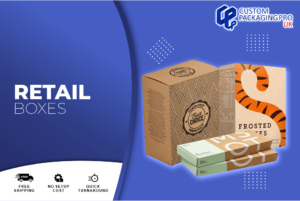In today’s competitive landscape, achieving FDA certification is vital for companies in the food, drug, and medical device industries. This certification not only demonstrates compliance with federal regulations but also builds consumer trust and enhances marketability. This comprehensive guide will explore the intricacies of FDA certification, its significance, the application process, and tips for navigating the certification journey successfully.
Understanding FDA Certification
What is FDA Certification?
FDA certification refers to the approval and regulation of products by the U.S. Food and Drug Administration (FDA), ensuring they meet safety and efficacy standards. This encompasses a wide range of products, including pharmaceuticals, medical devices, food, and dietary supplements. While the FDA does not issue a formal “certification” for every category, it sets standards that manufacturers must adhere to for market approval.
Historical Context
The FDA’s origins trace back to the early 1900s, driven by public health concerns over unsafe food and drug products. The establishment of the Federal Food, Drug, and Cosmetic Act in 1938 marked a significant milestone, giving the FDA the authority to oversee the safety of these products. Over the years, regulations have evolved, adapting to advancements in science and technology while aiming to protect public health.
The Importance of FDA Certification
Ensuring Consumer Safety
The primary purpose of FDA certification is to ensure that products are safe for public consumption. By adhering to rigorous testing and evaluation processes, the FDA helps prevent unsafe, ineffective, or misbranded products from reaching consumers. This regulatory oversight is crucial for maintaining public trust in the products available in the market.
Legal Compliance
For businesses, obtaining FDA certification is often a legal requirement. Failure to comply can lead to serious repercussions, including product recalls, fines, and even legal action. Certification serves as proof that a company is committed to meeting regulatory standards, which is essential for both domestic and international trade.
Competitive Advantage
FDA certification can provide a significant competitive edge in the marketplace. Consumers are more likely to choose products that carry FDA approval, as it signals safety and reliability. Additionally, companies with FDA certification can often negotiate better partnerships, secure funding, and enhance their brand reputation.
The FDA Certification Process
Step 1: Determine Product Classification
The first step in the FDA certification process is determining the product classification. Products are categorized into three classes based on their risk levels:
- Class I: Low-risk products (e.g., bandages, dental floss) that typically require minimal regulatory control.
- Class II: Moderate-risk products (e.g., insulin pumps, surgical drapes) that require specific performance standards and pre-market notification.
- Class III: High-risk products (e.g., pacemakers, implantable devices) that require pre-market approval based on clinical data.
Understanding the classification helps guide the subsequent steps in the certification process.
Step 2: Pre-Market Submission
Depending on the product class, manufacturers may need to submit specific documentation to the FDA before marketing their product. This can include:
- 510(k) Submission: For Class II devices, demonstrating that the product is substantially equivalent to a legally marketed device.
- Pre-Market Approval (PMA): Required for Class III devices, involving rigorous clinical trials and extensive documentation to demonstrate safety and effectiveness.
Manufacturers must prepare thorough and accurate submissions to avoid delays in the approval process.
Step 3: Quality Management System (QMS) Implementation
A robust Quality Management System (QMS) is critical for compliance with FDA regulations. This system should encompass quality assurance, quality control, and continuous improvement processes. Implementing a QMS helps organizations maintain consistent product quality and facilitate regulatory inspections.
Common Challenges in Obtaining FDA Certification
Complexity of Regulations
Navigating the FDA’s complex regulatory framework can be daunting, especially for small and medium-sized enterprises (SMEs). Understanding the specific requirements for each product category and maintaining compliance can be challenging. Consulting with regulatory experts can help alleviate this burden.
Resource Limitations
Many companies, particularly startups, face resource constraints that hinder their ability to invest in quality management systems, training, and regulatory submissions. However, prioritizing regulatory compliance can pay off in the long run, as it enhances product safety and market acceptance.
Keeping Up with Changes
FDA regulations are continually evolving, influenced by new scientific findings and public health concerns. Companies must stay informed about regulatory updates and be prepared to adapt their practices accordingly. Engaging with industry associations and attending relevant training can help keep organizations abreast of changes.
Strategies for Successful FDA Certification
Invest in Training and Education
Empowering employees with knowledge about FDA regulations and quality standards is crucial for ensuring compliance. Regular training sessions can enhance understanding and foster a culture of quality within the organization.
Engage with Regulatory Experts
Collaborating with regulatory consultants or legal experts can streamline the certification process. These professionals can provide valuable insights, assist with documentation, and help navigate complex regulations.
Emphasize Quality Control
Implementing robust quality control measures at every stage of production can significantly enhance the chances of successful certification. Regular audits and continuous improvement practices help identify and rectify potential issues before they escalate.
Foster Open Communication
Maintaining open communication with the FDA throughout the certification process can facilitate a smoother journey. Organizations should be proactive in seeking clarification on regulatory requirements and addressing any concerns promptly.
Conclusion: Your Path to Success
Achieving FDA certification is a multifaceted journey that requires careful planning, investment in quality systems, and a commitment to regulatory compliance. While the process may be complex, the benefits—ranging from consumer safety to enhanced marketability—are invaluable.
By understanding the certification process, engaging with experts, and fostering a culture of quality, organizations can navigate the challenges of FDA certification effectively. In an increasingly regulated landscape, FDA certification is not just a milestone; it is a crucial step toward ensuring that products meet the highest standards of safety and efficacy, ultimately paving the way for success in the marketplace.






